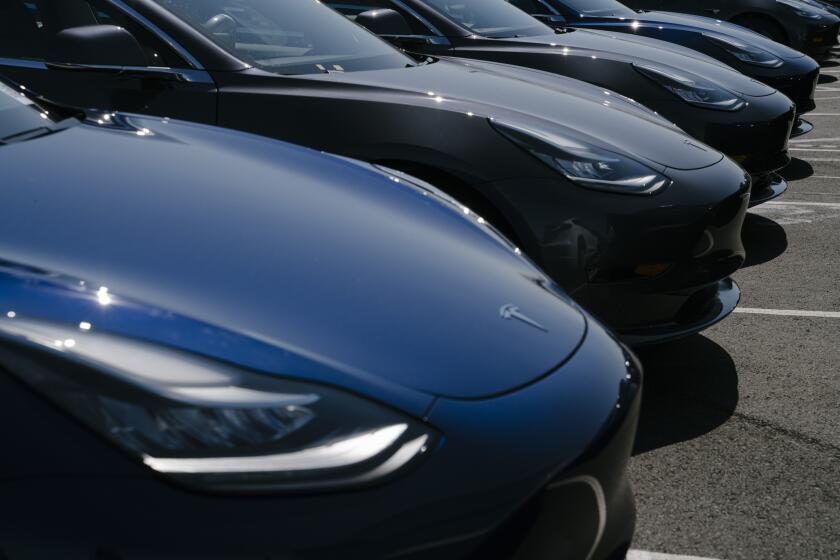Self-driving Uber in fatal crash wasnât programmed to spot pedestrians in roadway
Uber Technologies Inc.âs self-driving test car that struck and killed a pedestrian last year wasnât programmed to recognize and react to jaywalkers, according to documents released by U.S. safety investigators.
The National Transportation Safety Board on Tuesday released more than 400 pages of reports and supporting documents on the March 2018 crash that killed 49-year-old Elaine Herzberg as she walked her bicycle across a road at night in Tempe, Ariz.
The documents painted a picture of safety and design lapses with tragic consequences but didnât assign a cause for the crash. The safety board is scheduled to do that at a Nov. 19 meeting in Washington.
âWe deeply value the thoroughness of the NTSBâs investigation into the crash and look forward to reviewing their recommendations once issued after the NTSBâs board meeting later this month,â the company said in a statement. The company said it regrets the incident and has made improvements to prioritize safety.
The case is being closely watched in the emerging industry of self-driving vehicles, a technology that has attracted billions of dollars in investment from companies such as General Motors Co. and Alphabet Inc. in an attempt to transform transportation.
With Teslaâs Smart Summon feature, the car drives itself to its human owner. Itâs already being abused, raising public safety questions.
The report said âthe system design did not include a consideration for jaywalking pedestrians.â Herzberg was crossing the road outside of a crosswalk.
The Uber vehicleâs radar sensors first observed Herzberg about 5.6 seconds prior to impact before she entered the vehicleâs lane of travel, and initially classified her as a vehicle. But the system changed its classification of her into different objects several times and failed to predict that her path would cross the lane of the self-driving test SUV, according to the NTSB.
Uber made extensive changes to its self-driving system after several reviews of its operation and findings by NTSB investigators. The company told the NTSB that the new software would have been able to correctly identify Herzberg and triggered controlled braking to avoid her more than 4 seconds before the original impact, the NTSB said.
The safety driver behind the wheel of the car was watching a video on a mobile device and didnât see Herzberg in time. Less than five months before the accident, Uber had cut back to a single safety driver in its test vehicles. Other companies, such as GMâs Cruise affiliate, use two.
The Uber Advanced Technologies Group unit that was testing self-driving cars on public streets in Tempe didnât have a stand-alone safety division, a formal safety plan, standard operating procedures or a manager focused on preventing accidents, according to the NTSB.
Instead, Uber had company-wide values it promoted to its employees, such as âdo the right thing,â the NTSB said. The company, in its statement, said that it had also had safety policies and procedures though not a formal safety plan.
Beene and Levin write for Bloomberg.
More to Read
Inside the business of entertainment
The Wide Shot brings you news, analysis and insights on everything from streaming wars to production â and what it all means for the future.
You may occasionally receive promotional content from the Los Angeles Times.











